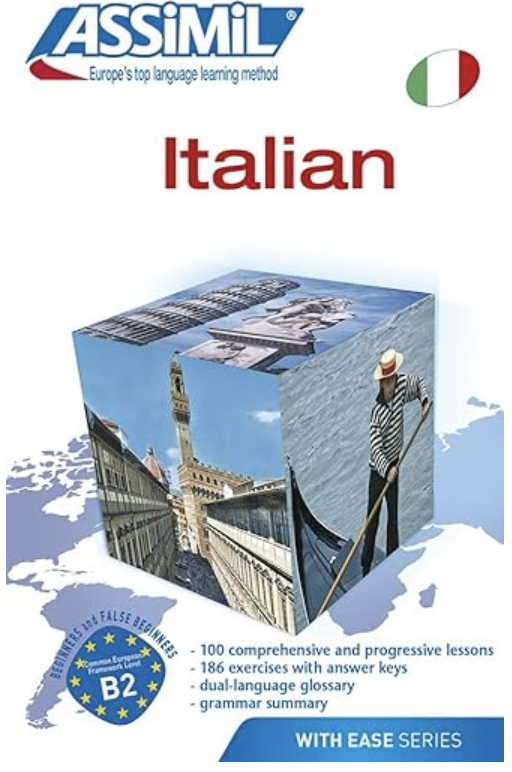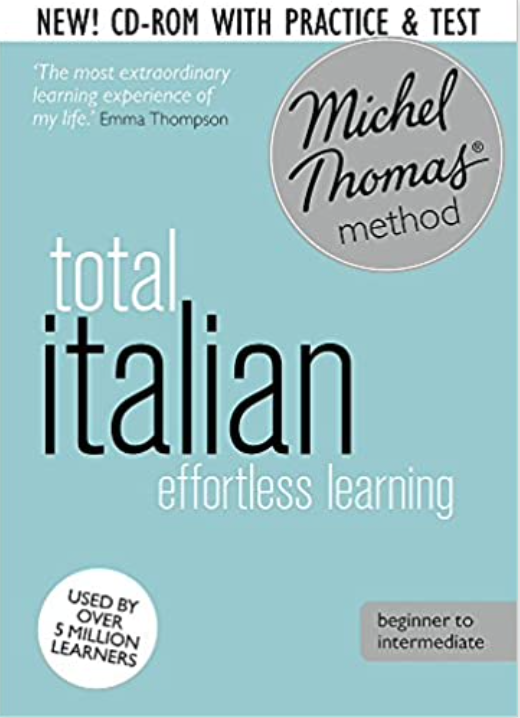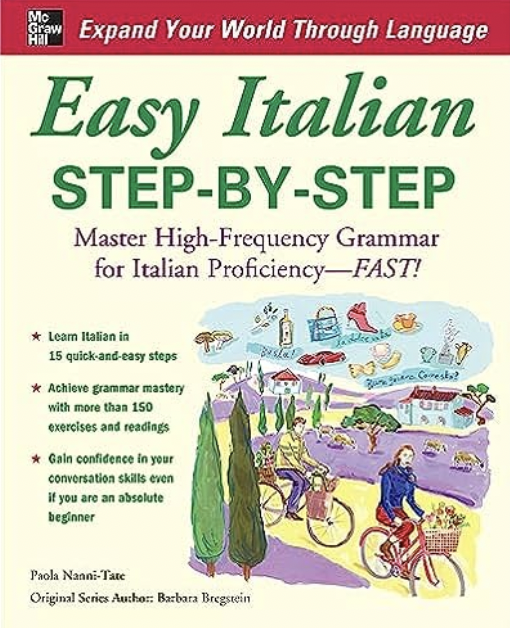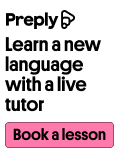1.
Determine Your Learning Style
To learn a foreign language efficiently, it’s important to understand your learning style. Are you a visual, auditory, or kinesthetic learner? Knowing this information can help you identify the best way to absorb information.
Think back to your days as a student in high school or college. How did you best retain information? Did you learn better through listening, reading, or hands-on experience?
This is critical information when choosing a language learning program. For example, many beginner Italian courses are audio-based, which works well for auditory learners but may not be the best fit for visual learners. Before committing to a program, take a moment to consider your learning style and find an approach that suits you.
It’s important to remember that what works for one person may not work for another. Don’t just copy someone else’s best practices. They may have succeeded because the method matched their learning style, but it may not be effective for you.
If you want to learn more about different learning styles, read my article on the subject here.
2.
Follow a Structured Learning Plan
When it comes to learning a romance language like French, Spanish, or Portuguese, it’s important to follow a structured learning plan that includes grammar rules and patterns. While some may claim that you can learn Italian without grammar, it’s essential to have a strong understanding of the language’s foundational structure in order to achieve fluency.
Knowing (a little) grammar will pave your way to fluency. Mastering the basics of Italian grammar will provide you with a solid framework to build upon as you continue to learn the language. Understanding grammar rules and patterns will allow you to form sentences correctly and communicate more effectively with native speakers.
While it can be tempting to try to learn a language through immersion or without a structured plan, this approach often leads to confusion and frustration. A structured learning plan will help you stay on track and ensure that you are building your language skills in a logical and effective way.
To achieve fluency in Italian (or any language), it’s important to prioritize grammar as a fundamental aspect of your language learning journey. By mastering the foundations of Italian grammar, you’ll be well on your way to fluency in no time.
When they are suggesting you should learn Italian without grammar, run away. They are scamming you.
“Do it makes sense? “ (Joking here!)
To get a sense of how grammar can help you build-up your Italian fluency, let’s have a look at simple verb conjugation, the present tense conjugation of the verb “viaggiare” which means, to travel.
- Io viaggio
- Tu viaggi
- Lui viaggia
- Noi viaggiamo
- Voi viaggiate
- Loro viaggiano
All regular verbs ending in “- are” follow the same conjugation pattern.
Once you learn the grammar pattern for Italian verbs like “viaggiare” (to travel), you can apply it to other verbs as well. Most Italian verbs are similar to viaggiare. Learning the pattern once allows you to use it repeatedly in the future for any verb that follows the same pattern.
My Two Cents:
Having a strong foundation in the grammar of Italian or any other language will make you an independent learner. Grammar patterns are like the bricks needed to build a house. Once you master the grammar, you can create your own language and express your own thoughts.
Understanding the foundations of the language will help you become a more independent speaker. Simply memorizing random sentences from language learning apps or courses will only result in repeating someone else’s words or thoughts.
To truly develop fluency in a foreign language, it’s important to learn the ability to put sentences together instead of just memorizing phrases. After all, who wants to sound like a parrot? 🙂
Grammar Topics you Should Learn as a Beginner
Mastering these topics will take your Italian a long way, promise.
| Language Topics | Learning Objectives |
|---|---|
| Conjugating verbs in the present tense | – Understand how to conjugate regular and irregular verbs in the present tense. – Form sentences using verbs in the present tense. |
| Conjugating verbs in the past tense (passato prossimo) | – Learn how to form the past tense using the “passato prossimo” structure. – Practice conjugating verbs in the past tense for different subjects. |
| Building a simple sentence | – Understand the basic sentence structure in Italian, including subject-verb-object order. – Construct simple sentences with proper word order. |
| Asking questions in Italian | – Learn how to formulate questions in Italian, including yes/no questions and information questions. – Practice asking questions in various contexts. |
| Using articles in Italian | – Understand when and how to use definite (il, la, i, le) and indefinite (un, una, uno, delle) articles. – Apply the appropriate articles to nouns in sentences. |
| Noun and adjective agreement (number and gender) | – Learn the rules for gender and number agreement between nouns and adjectives. – Apply these rules when describing objects or people in Italian. |
| Expressing desires and abilities (I want, I need, I can) | – Master how to express desires, needs, and abilities in Italian using phrases like “Voglio” (I want), “Ho bisogno di” (I need), and “Posso” (I can). |
| Pronouns (me, you, him, her, it, us, them) | – Learn the Italian pronouns for different subjects, including “io” (I), “tu” (you), “lui/lei” (he/she), “noi” (we), “voi” (you, plural), and “loro” (they). |
| Common questions (time, weather, etc.) | – Familiarize yourself with common questions related to time, weather, and other everyday topics. – Practice asking and answering these questions in Italian. |
Vocabulary Topics you Should Learn as a Beginner
| Conversation Topics | Learning Objectives |
|---|---|
| Talking about free time | – Learn vocabulary related to hobbies and leisure activities. – Practice discussing your interests and free time activities in Italian. |
| Discussing work | – Acquire work-related vocabulary and phrases. – Be able to describe your job or occupation in Italian. |
| Talking about family | – Learn family-related vocabulary. – Practice discussing your family members and relationships in Italian. |
| Describing your locality, house, city | – Learn vocabulary for describing places and locations. – Describe your neighborhood, house, and city in Italian. |
| Buying food and drinks | – Learn food and beverage-related vocabulary. – Practice ordering food and drinks in restaurants or cafes in Italian. |
| Shopping for clothes | – Acquire clothing-related vocabulary. – Be able to shop for clothes, describe clothing items, and ask for assistance in Italian stores. |
My rule of thumb here is, spend some time to try out a few different learning approaches or Italian online tutors and stick to the one and only that make your study time super efficient, effective and most importantly enjoyable!
3.
Use the Best Learning Materials
What materials should you use to learn Italian?
Self-learning is a great option for many, but it’s important to ensure you surround yourself with top-notch learning materials that will keep you motivated and provide a solid foundation for your Italian.
Don’t be too eager to jump from one resource to the next every other day. Building a strong foundation is essential when acquiring a new language or any subject. With a solid framework, the path to fluency will be easier and more efficient.
Here are my top recommendations for beginners. These are all tools that I have personally used and recommended to my students:
Self-paced Italian learning courses
Rocket Language Italian is a self-paced course for beginners and complete beginners.

If you’re starting out and want to get a feel for learning Italian, a self-paced course may be ideal for you. Rocket Language offers some of the best self-paced courses available, in many different languages. What I like about these courses is that they offer three levels, with the first designed for total beginners. Additionally, the courses are written in English, so you won’t be intimidated by intricate explanations of grammar in a language you’re not yet proficient in. The courses also offer a straightforward and user-friendly learning itinerary, so you know what level you’re at during your learning journey. Finally, unlike some other courses, Rocket Language offers a 60-day money-back guarantee in case you’re not satisfied.

The Assimil Method
The Assimil Method is an excellent resource for absolute beginners and those who are interested in self-study.
This method consists of 100 dialogues presented in Italian and your native language (the most common languages are available). The idea is that by reading and listening to the dialogues simultaneously, you will naturally internalize the language.
My experience: although I find Assimil a viable way to access Italian as an absolute beginner, long term, it will prove not to be a sufficient resource to advance. I suggest starting with Assimil to get an idea of how the language works and then pair it with other learning methods or a teacher and a grammar textbook.
Pros: excellent pronunciation practice, working on your listening skills, and familiarizing yourself with the most common vocabulary.
Cons: bit expensive, not being sufficient for becoming fluent, and not having extensive grammar instruction. It is also not ideal for those who are not familiar with grammar.

The Michel Thomas Method
The Michel Thomas Method is another tried and true tool for self-learners who are auditory learners and native English speakers. The course is entirely audio-based and breaks down the Italian language into easily digestible chunks, making it accessible to those who have little knowledge of Italian grammar or who lack a passion for it.
Like Assimil, Michel Thomas’s courses are an effective way to grasp the basics of Italian and become familiar with the language’s logic. I recommend it for those who need to learn through repetition and don’t have much time to do homework or take a formal course.
Pros: learn at your own pace, little emphasis on grammar, a lot of repetition, useful for understanding the logic of the language as an absolute beginner or native English speaker. Excellent for auditory learners, as it is an audio-based course.
Cons: Not sufficient for becoming fluent, minimal emphasis on grammar, limited variety in the presented vocabulary, not ideal for visual learners.
Best Italian Textbooks for Beginners

You can’t help but learn the foundations of grammar when flirting with a romance language, like Italian. Easy Italian Step by Step is the best grammar reference for English native speakers available on the market.

I like using ‘Alto A1‘ in my typical class for complete beginners and upper-beginners. Although this textbook is not intended for independent study, it’s still a great resource for learning useful vocabulary for everyday situations and audio lessons with built-in grammar explanations, especially for having a learning itinerary lined up for you.
Listening Practice for Beginners

Being exposed to correct pronunciation and the sound of words, along with the intonation of sentences, is essential for long-term proficiency in any language. I recommend Italian Pod 101 as a valuable resource for listening to short tracks tailored for complete beginners through upper-intermediate speakers.
Reading Practice for Beginners

Reading is widely considered the most effective way to activate your passive vocabulary and improve your grammar skills, regardless of your level. Reading a short story in easy Italian can help you piece everything you’re learning together and learn how to construct proper Italian sentences in a natural way.
How to Learn Italian: solo, in group classes or with private teacher?
Solo Learning:
Pros: affordable, allows you to learn at your own pace.
Cons: lack of feedback, structure, and guidance.
If you have a tight schedule or limited budget, or if you prefer to learn on your own terms, solo learning can be an attractive option. The internet provides many opportunities to find online courses for absolute beginners that can help you build a solid foundation in Italian. However, in my experience, it’s best to hire a teacher when you need feedback or to overcome a learning plateau. Using the resources mentioned in this post’s starter kit can provide a bit of structure and guidance, even if you’re learning with a teacher or in a class.
Italian Private Classes
Pros: personalized instruction, constant feedback, faster results
Cons: expensive, requires high commitment
Learning with a private language instructor can be likened to going to the gym and hiring a personal trainer. How much do you want to learn Italian? Do you prefer a formal approach or a more casual one? Undoubtedly, learning with a private instructor is a luxury for many and requires commitment to weekly meetings and homework. However, it can save you a lot of time and help you reach your goal faster.
Choosing the right instructor is also an art in itself. Nowadays, the internet is full of teacher marketplaces where you can find cheap tutors. However, it is important to note that most of these marketplaces charge a high commission to teachers or employ barely qualified and ill-prepared instructors.
My rule of thumb here is to look for an independent teacher and ask for a program with clear goals and structure, rather than individual meetings. Use the teacher marketplaces for conversation practice, tutoring or informal learning.
The most popular online tutoring marketplaces are Italki and Preply, both of which offer both 1-to-1 and group classes in Italian.
Italian Group Classes
Pros: affordable, structured, learning in a group.
Cons: large groups, lack of individualized attention, fixed class times.
Group lessons offered by language schools can be a good compromise for those who need structure and prefer interactive learning. Attending weekly classes provides a sense of progress and accountability. However, the downside is that your classmates might not be as motivated as you, which can slow down the learning process. Additionally, you may not be exposed to the correct accent, as you’ll mostly hear Italian used and pronounced by other students, rather than the teacher.
4.
Get into the Habit of Language Learning
“Learning is a marathon, not a sprint”

My number one piece of advice for fresh Italian learners is to start fast, get a grip on the language, and then slow down. If you start slowly, you will never build up.
After coaching hundreds of students, I have realized that it can be frustrating to move slowly as an absolute beginner or beginner. When taking up something new, you want to see the first results soon. Acquiring a foreign language is still one of those things that you can’t get instantly. It requires time, consistency, and effort. When you start something, you are excited and motivated, but if you don’t see any results coming quickly, it’s easy to lose steam and slowly let it go.
That’s why I believe that putting a little more effort into learning Italian as an absolute beginner or beginner is a smart way to approach it. I always tell my new students to start intensively and slow down once the language makes sense to them. Advancing very slowly as a beginner can be frustrating.
That’s why maintaining momentum is important. To do this, it’s crucial to set up a learning plan, such as meeting with your teachers at the same time every week or setting aside time to study twice a week at the same time, and sticking to it. If you don’t commit to a regular plan and stick to it, it will be harder to build the habit of consistent learning, which is key to mastering any skill, including Italian.
5.
Set smart goals
As a seasoned Italian online language teacher, I know that most students are fueled with plenty of motivation when they start learning Italian. However, after a while, they lose the steam to progress. Why? As a teacher of Italian and an avid language learner, I find that the reason lies in the lack of learning structure and clear goals. Without a clear vision of your learning goal, you will hardly know the proper measures to implement to pursue it. Think about what you want to do with your Italian in order to stay motivated and keep your enthusiasm for learning high.
Here are some ideas for language learning goals:
- Booking a one- or two-week language immersion trip at a language school in your favorite city.
- Taking a language certification exam as (like the CILS or Celi Certifications).
- Committing to finishing a language level by the end of the year (that’s where language textbooks come in handy. For example, commit to finishing the A2 textbook by the end of this year or next summer).
6.
Seek Out Honest and Helpful Feedback
Make sure to receive feedback and track your learning progress. Learning without knowing at which stage or level you are, or without being made aware of recurring mistakes or being challenged , can result into a learning plateau.
Get assessed regularly.
Get challenged.
Getting feedback is the most efficient way to advance.
Get regularly assessed. Getting feedback, it’s the most efficient way to advance.
7.
Use it or loose it
Let’s get this clear: you don’t need to live in Italy to get a good grasp of the language. I know people who have spent years in Italy and still don’t master the language. On the flip side, I know people who haven’t yet set foot in my country or have done so sporadically and speak Italian fluently.
The key is to integrate Italian into your routine, no matter what your Italian level is.
The key is to integrate Italian into your routine, no matter what your Italian level is.
Immersive Italian Learning Ideas for Beginners
Speaking Practice for Beginners
Find a conversation partner or a tutor Preply. Preply is an extremely user-friendly platform that I also personally use to connect with native speakers to practice my German and French. If you don’t live in Italy, it’s probably the most cost-effective way to practice your Italian. With this link you can get a 50% discount on your first lesson.
Free Chat Rooms
HelloTalk and Tandem are both free mobile apps that you can use to find a language conversation partner. Another option is ConversationExchange.com, a free language exchange platform where learners can connect with native speakers to practice speaking with each other You can also us AI with Chat GPT to simuliate dialogues according to your level. Check this video to learn how to do it (link)
Smart Tip
Don’t spread yourself too thin by using an endless number of learning tools, methods, or strategies. Pick one or two, get into the habit of using them for a consistent period, and move on. Most students that have come to seek my guidance after hitting a learning plateau for months made the mistake of lingering on the same unstructured content for way too long.
Is Italian easy to learn?
Italian is one of the easiest languages to learn due to its well-structured grammar and phonetic nature (meaning you read what is written), making pronunciation very straightforward. While Italian is certainly easier to learn than Arabic, Japanese, or German, it still requires time, dedication, and a budget. Speakers of Romance languages, as well as German and Slavic language, will have an advantage in learning the language, as all of these languages have a solid grammar framework. English native speakers may find approaching the language a bit more complicated because of the different grammar structure and because most English words or patterns don’t have direct translations in Italian. However, this should not discourage you. Italian is a fairly easy language to learn, and the best part is that there are plenty of free and paid learning resources available to access.
Is it possible to learn Italian in 3 months?
I warn you, this may be an unpopular marketing statement, but I believe in what I say (which comes from my voracious language learning experience): I think it takes years to learn a language fluently. You can certainly get a good grasp of the basics in six months, you can get to a solid intermediate level in two years of consistent study, but in order to master the language, it will take more than that. It is impossible to quantify, as it often comes down to one’s commitment and especially the amount of time, words, and budget one can invest. However, I am confident in saying that in six months or so, you can easily gain a solid understanding of the A1 level and learn how to make simple sentences in most daily situations.








